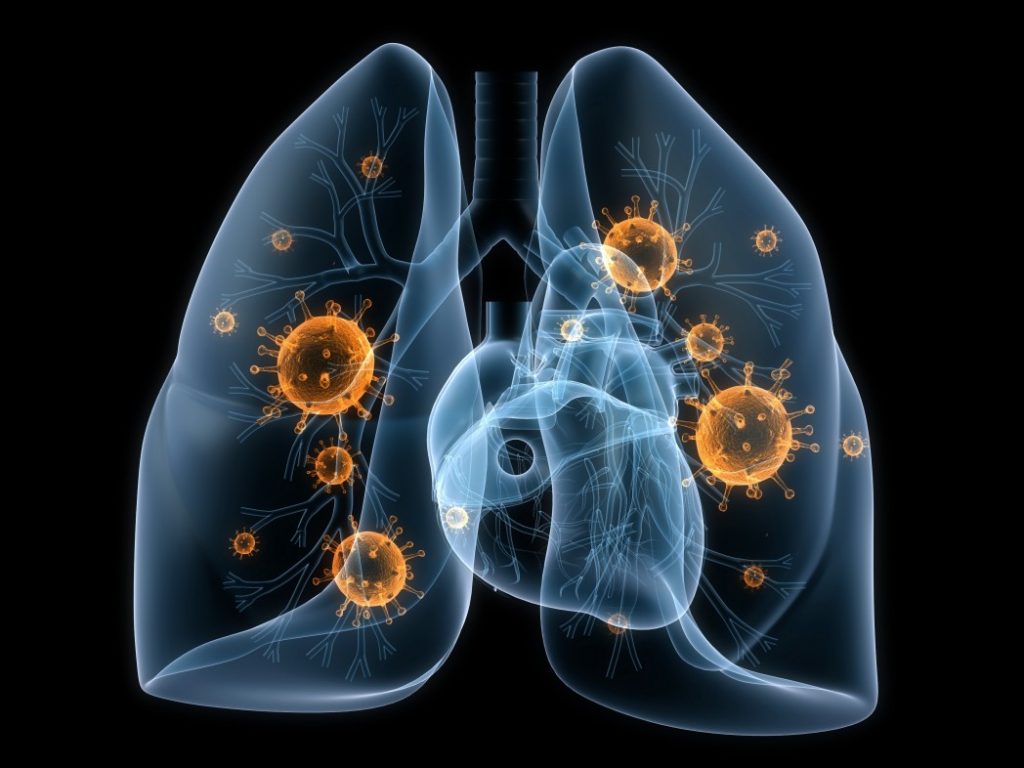Messenger RNA has been viewed as a potential therapy for several diseases for many years. However, the biggest obstacle to this approach so far has been finding safe and efficient ways to deliver mRNA molecules to the target cells. In an advance that could lead to new treatments for lung disease, MIT researchers have now designed an inhalable form of mRNA. This aerosol could be administered directly to the lungs to help treat diseases such as cystic fibrosis. The researchers released their findings today in Advanced Materials through an article titled “Inhaled Nanoformulated mRNA Polyplexes for Protein Production in Lung Epithelium.”
“We think the ability to deliver mRNA via inhalation could allow us to treat a range of different disease of the lung,” notes senior study investigator Daniel Anderson, PhD, an associate professor at MIT and a member of MIT’s Koch Institute for Integrative Cancer Research and Institute for Medical Engineering and Science (IMES).
In the current study, the researchers showed that they could induce lung cells in mice to produce a target protein—in this case, a bioluminescent protein. If the same success rate can be achieved with therapeutic proteins, that could be high enough to treat many lung diseases.
For years, researchers have been working on developing mRNA to treat genetic disorders or cancer, by essentially turning the patients’ own cells into drug factories. Because mRNA can be easily broken down in the body, it needs to be transported within a protective carrier. Anderson’s lab has previously designed materials that can deliver mRNA and RNAi to the liver and other organs, and some of these are being further developed for possible testing in patients.
For this study, the researchers wanted to create an inhalable form of mRNA, which would allow the molecules to be delivered directly to the lungs. Many existing drugs for asthma and other lung diseases are specially formulated so they can be inhaled via either an inhaler, which sprays powdered particles of medication or a nebulizer, which releases an aerosol containing the medication.
The investigators set out to develop a material that could stabilize RNA during the process of aerosol delivery. Some previous studies have explored a material called polyethylenimine (PEI) for delivering inhalable DNA to the lungs. However, PEI doesn’t break down easily, so with the repeated dosing that would likely be required for mRNA therapies, the polymer could accumulate and cause side effects.
To avoid those potential side effects, the researchers turned to a type of positively charged polymers called hyperbranched poly (beta-amino esters), which, unlike PEI, are biodegradable. The particles the team created to consist of spheres, approximately 150 nanometers in diameter, with a tangled mixture of the polymer and mRNA molecules that encode luciferase, a bioluminescent protein. The researchers suspended these particles in droplets and delivered them to mice as an inhalable mist, using a nebulizer.
“Breathing is used as a simple but effective delivery route to the lungs. Once the aerosol droplets are inhaled, the nanoparticles contained within each droplet enter the cells and instruct it to make a particular protein from mRNA,” explains lead study investigator Asha Patel, PhD, a former MIT postdoc who is now an assistant professor at Imperial College London.
The researchers found that 24 hours after the mice inhaled the mRNA, lung cells were producing the bioluminescent protein. The amount of protein gradually fell over time as the mRNA was cleared. The researchers were able to maintain steady levels of the protein by giving the mice repeated doses, which may be necessary if adapted to treat chronic lung disease.
Interestingly, further analysis of the lungs revealed that mRNA was evenly distributed throughout the five lobes of the lungs and was taken up mainly by epithelial lung cells, which line the lung surfaces. These cells are implicated in cystic fibrosis, as well as other lung diseases such as respiratory distress syndrome, which is caused by a deficiency in surfactant protein.
Amazingly, the researchers also demonstrated that the nanoparticles could be freeze-dried into a powder, suggesting that it may be possible to deliver them via an inhaler instead of a nebulizer, which could make the medication more convenient for patients.







